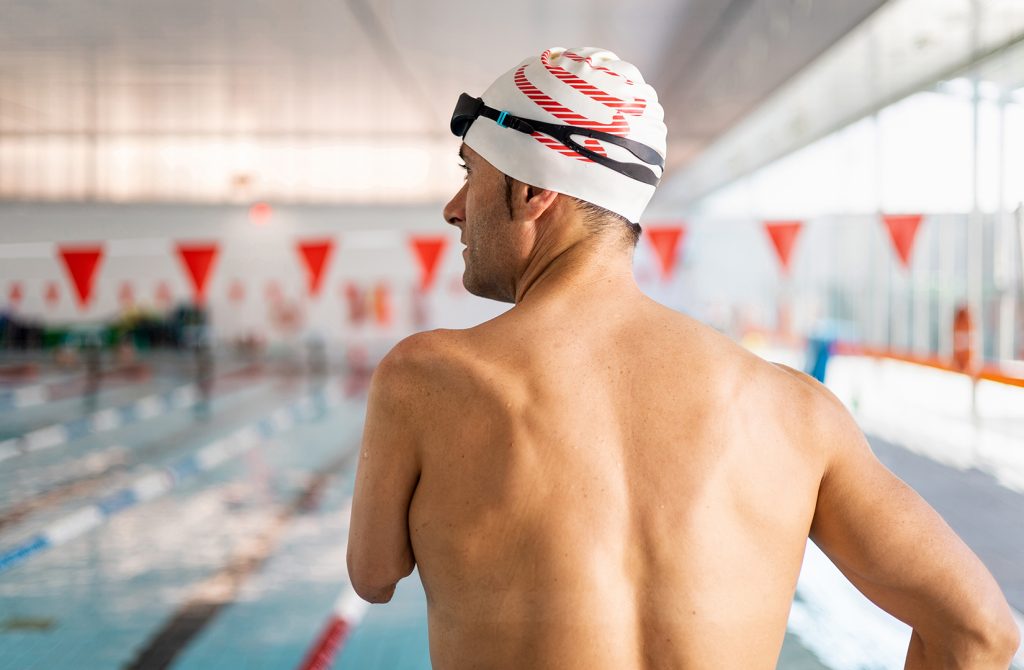Throughout Australia public swimming pools are not just places for recreation; they are community hubs that should be accessible and inclusive for individuals of all abilities. Designing accessible pool facilities is a multifaceted endeavour that goes beyond compliance—it’s about creating welcoming spaces that cater to diverse needs. In this guide, we cover the key considerations and best practices for designing swimming pools that are accessible to everyone.
Understanding Accessibility Standards
Before you get started it’s crucial to understand the accessibility standards and regulations that apply to public swimming pools. Check your local state and council guidelines on compliance standards, ensuring that your design aligns with these requirements.
Universal Design Principles
Embrace universal design principles to create spaces that are usable by people of all ages and abilities. This includes considering factors such as pathway widths, non-slip surfaces, and colour contrast to enhance visibility for individuals with visual impairments.
Community Engagement
Involve the community in the design process. Seek input from individuals with disabilities, local advocacy groups, and experts in inclusive design. This collaborative approach ensures that the design reflects the actual needs and preferences of the diverse user base.
Entry Points and Pool Access
The entry points to the pool area set the tone for accessibility. Consider incorporating various access options, such as sloped entries, pool hoists, access stairs with handrails and ramps. These features not only cater to wheelchair users but also provide a more gradual entry for individuals with mobility limitations.
Pool Lifts and Hoists
Pool lifts and hoists play a pivotal role in making pools accessible. Choose equipment that complies with accessibility standards, considering factors like weight capacity, ease of use, and installation requirements. Strategically place lifts to provide access to different areas of the pool. At Para Mobility our locally designed and manufactured Pelican and Kingfisher Pool Hoists provide a mix of options to suit every situation and weight requirement.
Safety and Signage
Clear and inclusive signage is essential for guiding individuals with varying abilities. Ensure that safety information, pool rules, and directions are communicated through visual, auditory, and tactile means. This is especially important for those with visual or hearing impairments.
Accessible Changing Facilities
An often-overlooked aspect of pool accessibility is the changing facilities. Design spacious and well-equipped changing rooms that accommodate individuals with diverse needs. Consider features like accessible showers, ceiling hoists, adjustable-height change tables, and proper signage.
Ongoing Training for Staff
Designing an accessible pool facility is not the end of the journey—it’s a continuous commitment. Train your team members on disability awareness, communication techniques, and the proper use of your specific accessibility features. An informed and welcoming team contributes significantly to the inclusivity of the pool environment.
Regular Accessibility Audits
Conduct regular accessibility audits to assess the effectiveness of your design and identify areas for improvement. Solicit feedback from users and be proactive in addressing any issues that may come up.
Designing accessible pool facilities is not just a legal requirement; it’s a commitment to creating spaces that reflect the values of inclusivity and community. By incorporating these considerations into your pool design, you contribute to a more accessible and enjoyable experience for everyone.
Not sure where to start? We have had decades of experience working alongside aquatic development teams and are happy to share our knowledge and educate on the functionality of our assistive technology.
Call us on 1300 444 600 or complete an enquiry form on our website and we’ll be in touch.


